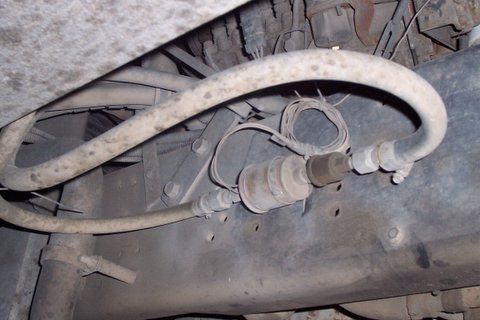Ryan7361 wrote:
UPDATE:
I have my ship back! In the end, I broke down and got a new carburetor from NAPA, and it runs great. I had a local old-school mechanic put the new one in for me. In the final analysis, I had a bad in tank fuel pump and a clogged 30 year old carburetor. How could both happen at the same time? Maybe the failed fuel pump sent a bunch of garbage to the carb? Anyway, I'm thinking about putting in one of those fuel filter/water separators like this one http://www.dutton-lainson.com/proddetail.php?prod=56591
Any thoughts? I'm just looking for ways to keep things as clean as possible.
Also, I need to change the oil. How much oil and what type does a 7.4L 454 V8 take? (the dipstick says 10W-30)
Ryan,
Congratulations! The water/fuel separator won't hurt anything and may help the carburator when the unit is parked for long periods. Sometimes metallic salts (from water) clog jets, very hard to dissolve when cleaned.
If the fuel tank is not kept full when parked, changes (drops) in outside temperature can cause an increased water condensation on the generously available bare tank walls above the fuel level. Once the condensation occurs, the rivulets of water run down the wall and end up beneath the fuel since water is heavier. These drops of water then stay liquid because the fuel seals them from re-evaporation and the air in the tank becomes dry because of this "powered" humidity loss. Whenever there is again high humidity in the general atmosphere (surrounding air outside the tank), the new humidity both migrates (diffuses) to the openly-vented tank and on top of that, the tank breathes with temp change. The condensing process starts all over again with fresh, new wet air. The alcohol now often found in fuel tends to absorb some of this water in suspension, but this is limited and the water in alcohol is corrosive itself when fully saturated. Mostly that means the raw water accumulates in a puddle at the bottom of the tank... right by the sump.
This condensation accumulation is
less prominent in newer tank designs because the fuel tanks are semi-sealed from the atmosphere to prevent fuel "stink", i.e. pollution. This provided the fuel cap is tight and many have experienced a check engine light when they are not. Replacement air (replaces fuel volume) in newer design fuel tanks is automatically allowed in, but not out, unless the engine is running whereby the fuel vapors, having been caught by carbon canister, are eventually efficiently burned by the engine. The computer actually reduces fuel injection flow to accomodate vapor so now we benefit from being able to burn,
and use, the fuel that was once evaporated and lost to the atmosphere. Ingenious, but partly why engine service has now become a scientific engineering feat.
One other reason to
always keep stored tanks full is that the same condensation can occur on the mechanical/electrical fuel float sending unit and cause it to stick. Thereafter, the fuel guage is inaccurate if it works at all. The corrosion also affects fuel pumps. This is a common occurance on C4 Corvettes, all of which used sealed tanks and fuel injection. I know, my wife had one and the previous owner apparently did not keep a full tank during storage. Fortunately the entire fuel sender/fuel pump lifts right out the top of the rear deck on these cars (via fuel filler assembly) in about 20 minutes.
Wes
...

